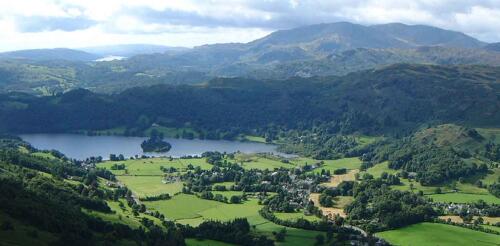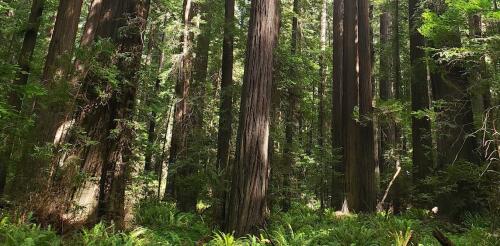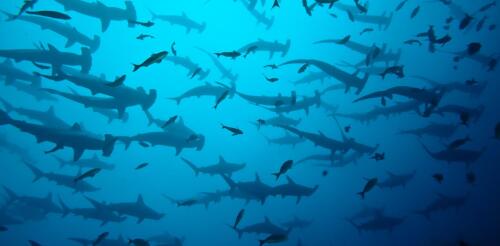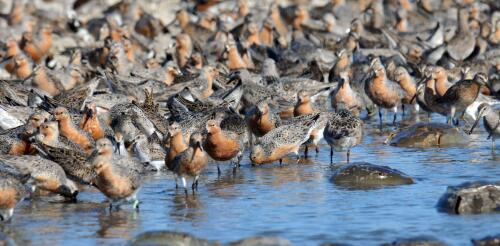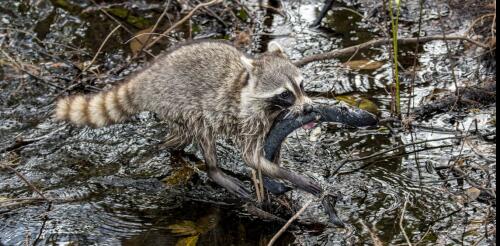Conservation
Musical performances usually happen in concert halls or clubs, but famed cellist Yo-Yo Ma is exploring a new venue: U.S. national parks. In a project called Our Common Nature, Ma is performing in settings such as the Great Smoky Mountains and the Grand Canyon. By making music and bringing people together in scenic places, Ma aims to help humans understand where they fit in the natural world. “What if there’s a way that we can end up thinking and feeling and knowing that we are coming from nature, that we’re a part of nature, instead of just thinking: What can we use it for?” Ma mused in a recent New York Times article. There’s a buzzword for this outlook: nature-positive. And it’s cropping up at high-level meetings, including the 2021 G-7 summit in Cornwall, England and the COP15 biodiversity conference in Montreal that adopted an ambitious framework for protecting nature in December 2022. As a group of environmental leaders wrote in 2021: &...
Many of the companies promising “net-zero” emissions to protect the climate are relying on vast swaths of forests and what are known as carbon offsets to meet that goal. On paper, carbon offsets appear to balance out a company’s carbon emissions: The company pays to protect trees, which absorb carbon dioxide from the air. The company can then claim the absorbed carbon dioxide as an offset that reduces its net impact on the climate. However, our new satellite analysis reveals what researchers have suspected for years: Forest offsets might not actually be doing much for the climate. You can listen to more articles from The Conversation, narrated by Noa, here. When we looked at satellite tracking of carbon levels and logging activity in California forests, we found that carbon isn’t increasing in the state’s 37 offset project sites any more than in other areas, and timber companies aren’t logging less than they did before. The findings s...
The Discovery Channel’s annual Shark Week is the longest-running cable television series in history, filling screens with sharky content every summer since 1988. It causes one of the largest temporary increases in U.S. viewers’ attention to any science or conservation topic. It’s also the largest stage in marine biology, giving scientists who appear on it access to an audience of millions. Being featured by high-profile media outlets can help researchers attract attention and funding that can help super-charge their careers. Unfortunately, Shark Week is also a missed opportunity. As scientists and conservationists have long argued, it is a major source of misinformation and nonsense about sharks, the scientists who study them, and how people can help protect endangered species from extinction. I am a marine biologist who worked with five colleagues in 2022 to scientifically analyze the content of Shark Week episodes. We tracked down copies of 202 episodes, w...
A biodiversity crisis is reducing the variety of life on Earth. Under pressure from land and water pollution, development, overhunting, poaching, climate change and species invasions, approximately 1 million plant and animal species are at risk of extinction. One ambitious proposal for stemming these losses is the international initiative known as 30x30: conserving and protecting at least 30% of Earth’s surface, on land and at sea, by 2030. Currently, 112 countries support this initiative, including the United States. More nations may announce their support at the international biodiversity conference that opens Dec. 7, 2022, in Montreal. Scientists say that protecting 30% of Earth’s surface will help species and ecosystems recover from the stresses that are depleting them. It also will conserve valuable services that nature provides to humans, such as buffering coasts from storms and filtering drinking water. Protecting forests and grasslands can help slow climate...
Wetlands are areas of land that are covered by water, or have flooded or waterlogged soils. They can have water on them either permanently or for just part of the year. Whether it’s year-round or seasonal, this period of water saturation produces hydric soils, which contain little or no oxygen. But this doesn’t mean that they are lifeless: Wetlands are full of unique water-loving plants and wildlife that have adapted to wet environments. Wetlands can take many different forms, depending on the local climate, water conditions and land forms and features. For example, swamps are dominated by woody trees or shrubs. Marshes often have more grasslike plants, such as cattails and bulrushes. Bogs and fens are areas that accumulate peat – deposits of dead and partly decomposed plant materials that form organic-rich soil. Trillions of dollars in ecological benefits Wetlands are important environments for many reasons. They provide ecological services whose value has...
